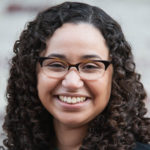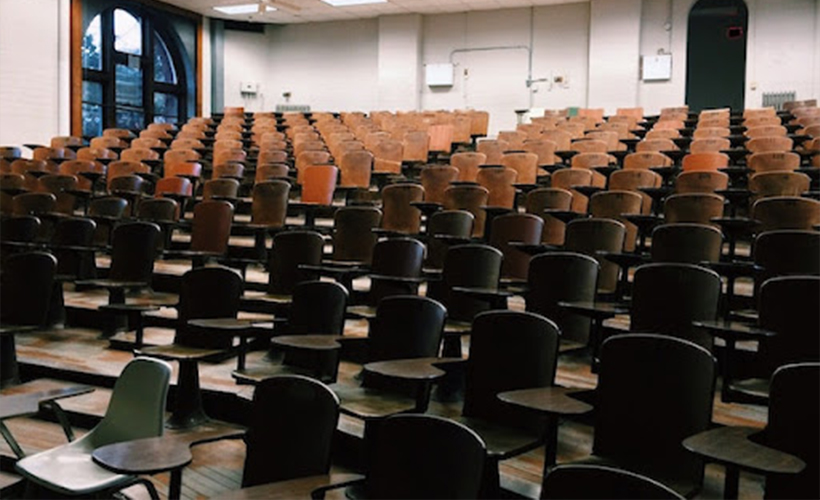Many academic librarians have to incorporate information literacy into their instruction sessions. We have the Association of College and Research Libraries (ACRL) framework for information literacy for higher education that we can utilize; however, sometimes we want to add to this framework or supplement it with other theories and pedagogies. Many academic librarians are searching for ways to do this. In this blog post, I speak with Symphony Bruce, the Critical Pedagogy Librarian at the New York University Libraries, who gives insight into critical information literacy and critical pedagogy.
Jamia: How do you incorporate critical information literacy philosophies in your instruction?
Symphony: I try to start with a grounding in critical pedagogy and my overall philosophy of education. I believe education can be a site of revolution and relation. While the typical classroom, especially in the higher ed setting, is not the only or best place to break down the social hierarchies that lead to power, privilege, and oppression, I believe we can and should strive for that.
Most of my instruction is via a single classroom visit, and it is really hard to do that deep revolutionary work in 75 minutes. But I can be relational and work to build connections with my students. I can do my best to level the hierarchy in the classroom by making space for a variety of knowledge and skills and recognizing that learning and teaching are mutually reciprocal experiences. I can allow for whole-class created materials. I can teach through dialogue and conversation. And I can expose students to the ways in which power, privilege, and oppression come into play in the information and scholarly communications ecosystem. By building my lessons with some combination of these characteristics, I feel that I am working closer to that goal.
Jamia: How do you lead your colleagues who work within NYU’s Department of the Libraries’ Teaching, Learning, and Engagement Division to apply critical pedagogy within their teaching?
Symphony: I have only been in my current position for a full year. That first year was mostly dedicated to getting to know my colleagues, the instruction/reference program, and the institution. Suppose our goal at NYU is to create a library that centers criticality widely, especially in our information literacy work. In that case, it makes sense to move slowly and get to know the culture of the place to understand how change best happens here. Now that I have been in the role for a year, my department will be facilitating a multipronged community of practice that centers on critical pedagogy and makes space for those who need/want theory and those who want practice (although I do not believe that there is a lot of space between these two pillars). Our goal is to provide a series of both deep work and more passive opportunities for staying in touch with the community of practice. This will be everything from reading groups to colleague-hosted workshops, from lesson planning sessions to a newsletter highlighting events and scholarship across libraryland and related fields that speak to some sort of criticality. We will use these varieties of engagement opportunities to gauge the needs and interests of our colleagues to plan for the future, making space for this work to be both iterative and have longevity.
Eventually, my goal is to help facilitate discussions of how we communicate this ethos of criticality to the rest of our teaching faculty to align our goals and the things faculty tend to ask for when they schedule library instruction.
Jamia: How do you monitor trends in emerging antiracist and critical pedagogies?
Symphony: I think my current process is less about monitoring new trends than getting an idea of how these ideas are expressed across different disciplines. Because librarianship is so interdisciplinary by nature, it feels important to me to read about how educators are incorporating these ideals into all aspects of their practice: planning, class procedures, materials, assignments, etc. It may not be the best strategy, but I follow scholars, educators, and advocates I respect on Twitter and bookmark whenever they talk about their classroom/workshops/pedagogy all the time. Dr. Tressie McMillan Cottom comes to mind. Or abolitionist Mariame Kaba. I also like to read the material in critical studies produced by other disciplines; the Center for Critical Race and Digital Studies is a great organization to follow for this kind of exposure.
Jamia: Can you please discuss your most used instruction assessment tools?
Symphony: Much of the assessment I do on a regular basis is formative in nature—quick check-ins with students during an instruction session to see if they understand what we are doing and why we are doing it and to gain their evaluation/opinion of the experience. Because much of my instruction is via single visits, there is not much opportunity to do a real summative assessment (i.e., can students show proficiency in a skill over a period of practice and evaluation?). Instead, this formative assessment looks like critical thinking questioning, both whole-class and to individuals, allowing student questions to guide the learning experience and allowing students to share their skills and expertise with each other. Veronica Arellano Douglas writes, “If we value students as individual learners, then assessment in library education programs should be about what students need (56)”1 to this end, I have often used simple surveys to gather from students what they want or need to know or what questions remain after the session.
Since working in k12, a high learning assessment environment, I am really suspicious of assessment for assessment’s sake. This goes for not only the assessment of student learning but also the assessment of information literacy programs. Unless we are ready or capable of addressing the feedback received, assessment feels too much like a sort of extractive data collection.
Conclusion
One of the tenets of librarianship is embracing lifelong learning. Below are some resources that can help further understand the concepts that Symphony mentions in her interview. Symphony Bruce has written and presented extensively on this topic, and I am happy to share some of her work with you.
Resources
- Teaching with Care: A Relational Approach to Individual Research Consultations
- Dispelling the Myth of Library Anxiety and Embracing Academic Discomfort
- ACRL IS Inclusive Pedagogy Committee: Bringing Race to the Forefront webinar
 Biography: Symphony Bruce is the Critical Pedagogy Librarian at NYU. Largely influenced by her time as a high school English teacher, Symphony believes deeply in the power of relationships and care in the ability to create powerful learning experiences for students and instructors alike. In the classroom, her favorite lessons include critical evaluations of authority and information ecosystems, and she is developing an interest in digital privacy and anti-surveillance. She earned her MLIS from the University of Missouri in 2017.
Biography: Symphony Bruce is the Critical Pedagogy Librarian at NYU. Largely influenced by her time as a high school English teacher, Symphony believes deeply in the power of relationships and care in the ability to create powerful learning experiences for students and instructors alike. In the classroom, her favorite lessons include critical evaluations of authority and information ecosystems, and she is developing an interest in digital privacy and anti-surveillance. She earned her MLIS from the University of Missouri in 2017.
See also:
- FREE webinar: The Early Academic Researcher: Promoting Discovery and Use of Primary Resources
- Library Instruction Development: Interview with Chelsea Misquith
- Unpacking Andragogy & Academic Library Instruction
1. Douglas, V.A. (2020). Moving from critical assessment to assessment as care. Communications in Information Literacy. doi: 10.15760/comminfolit.2020.14.1.4




